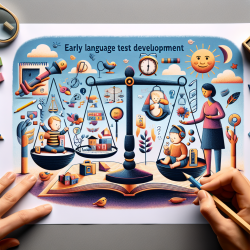Unlocking the Secret to Better Child Outcomes: What Every Speech-Language Pathologist Needs to Know!
As a speech-language pathologist, your role is pivotal in shaping the developmental trajectory of children. While we often focus on individual assessments and interventions, a broader environmental perspective can significantly enhance our understanding and approach. The recent research article, "Broadening the Environmental Lens to Include Social and Structural Determinants of Women’s Health Disparities," provides valuable insights that can be translated into improving child outcomes.
Understanding the Broader Environmental Context
The research emphasizes the need to consider upstream social and structural determinants of health, which can be pivotal in addressing health disparities. This broader lens is not just applicable to women’s health but extends to children’s developmental outcomes as well. By understanding these factors, speech-language pathologists can tailor their interventions more effectively.
Key Takeaways for Practitioners
- Integrate Environmental Context: Incorporate questions about a child's living environment, access to resources, and community support into assessments. This holistic view can provide insights into potential barriers to progress.
- Advocate for Interdisciplinary Collaboration: Work closely with educators, healthcare providers, and community organizations to address broader social determinants that may impact a child's development.
- Focus on Equity: Ensure that interventions are accessible and equitable, particularly for children from marginalized communities who may face systemic barriers.
Encouraging Further Research
While the article provides a robust framework, there is a need for further research specifically focused on children. As practitioners, you can contribute to this body of knowledge by documenting and sharing your observations and outcomes related to environmental factors in your practice. Collaborating with researchers can help in developing evidence-based strategies that address these broader determinants.
Conclusion
By broadening our environmental lens, we can better understand the complex factors influencing child development and speech-language outcomes. This approach not only enhances our practice but also contributes to creating equitable opportunities for all children to thrive.
To read the original research paper, please follow this link: Broadening the Environmental Lens to Include Social and Structural Determinants of Women’s Health Disparities.










